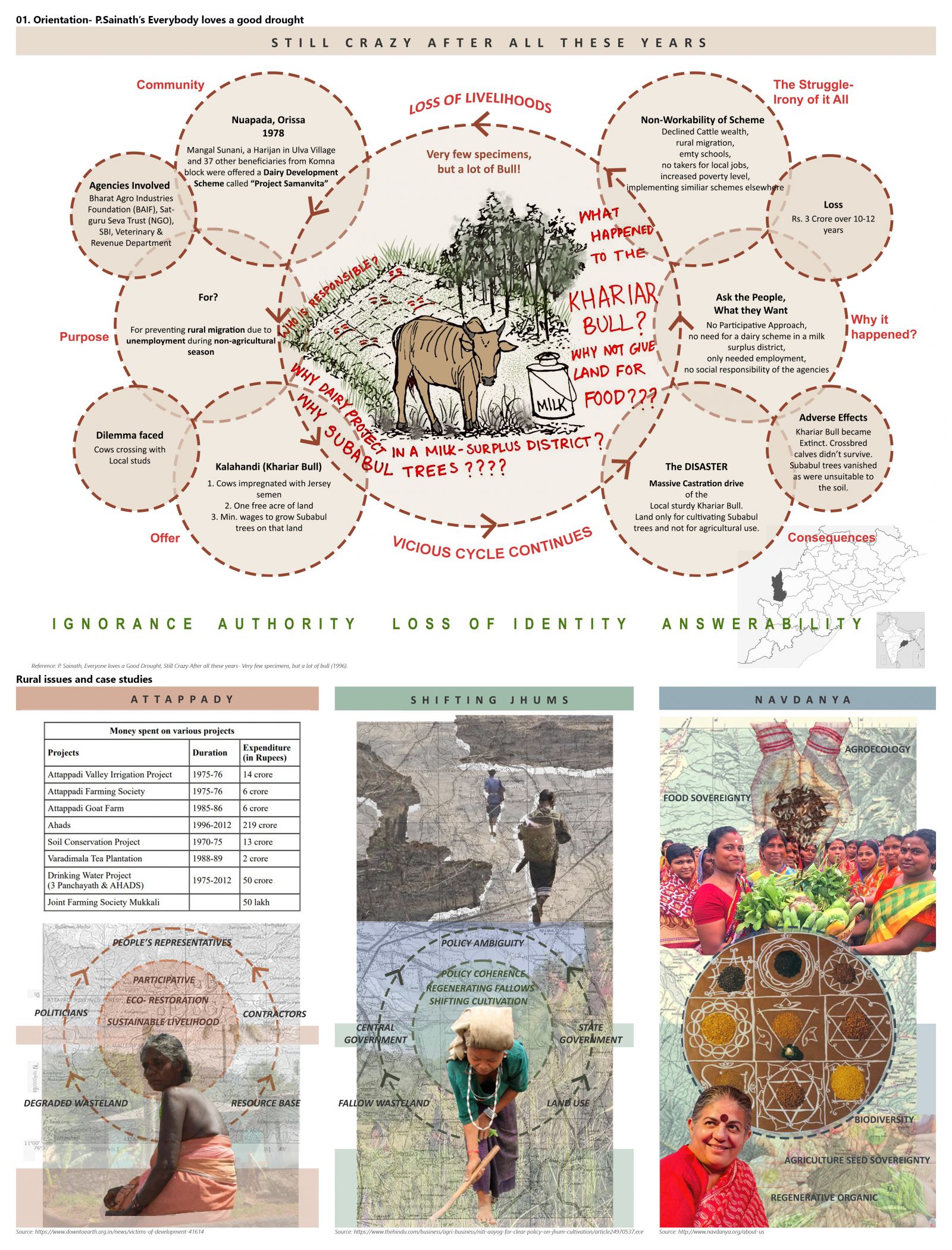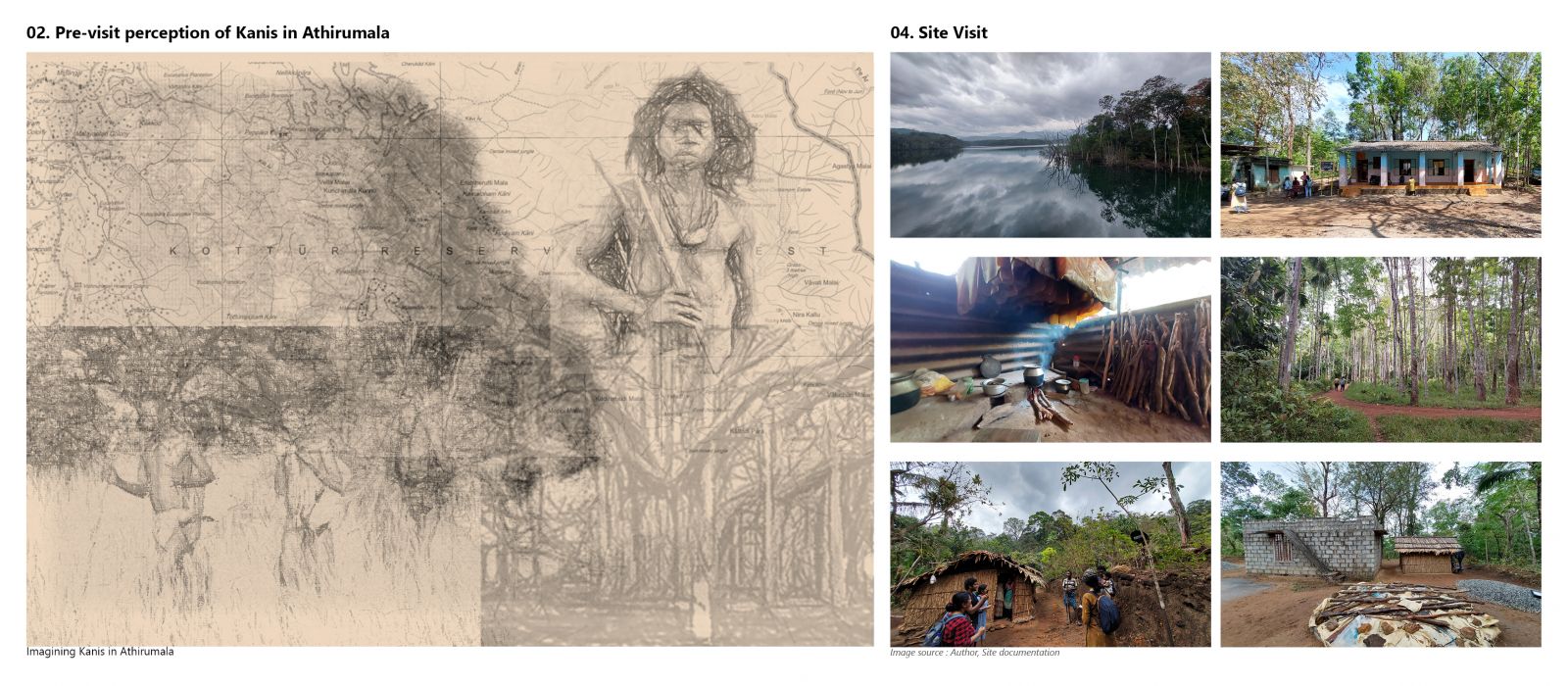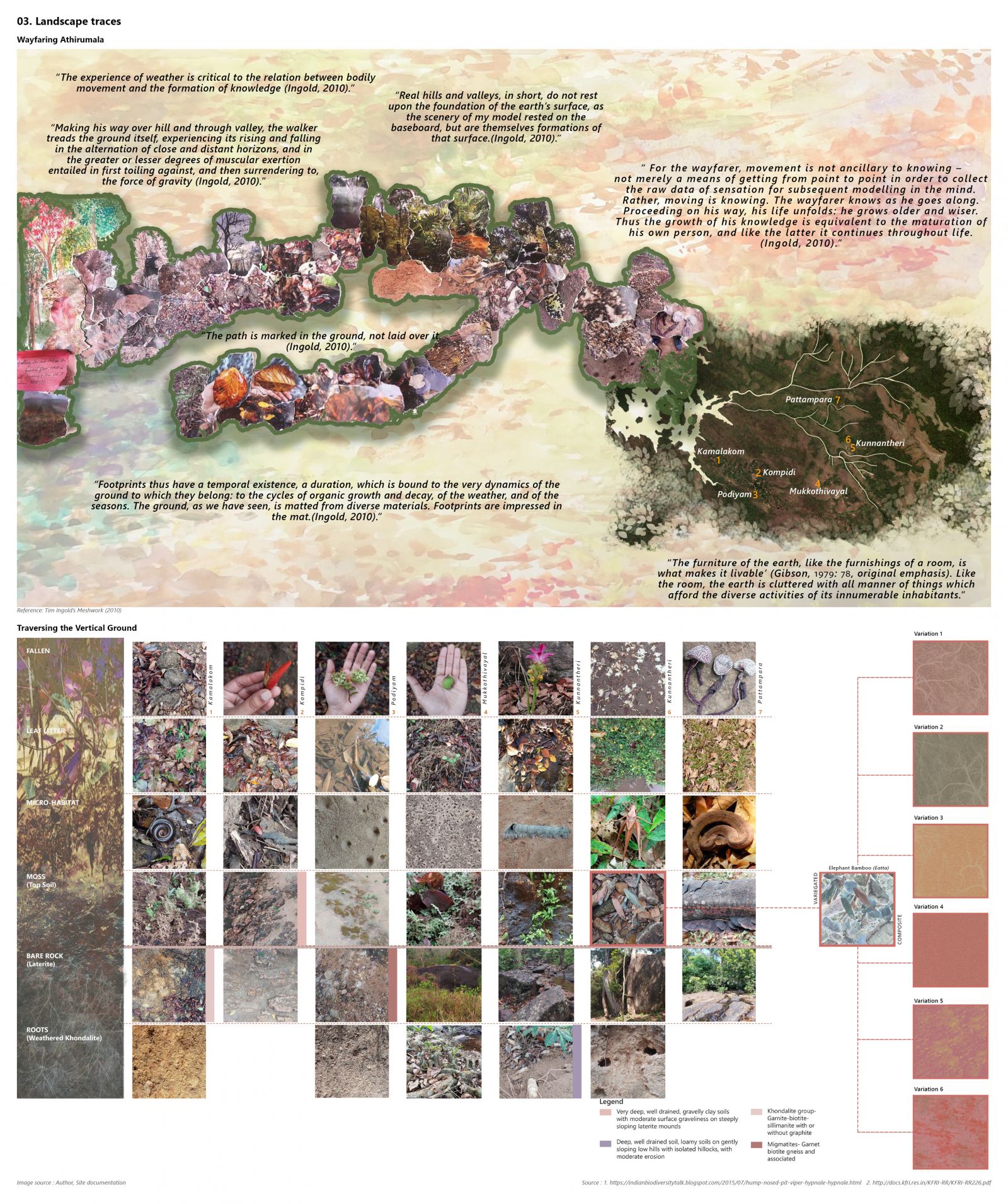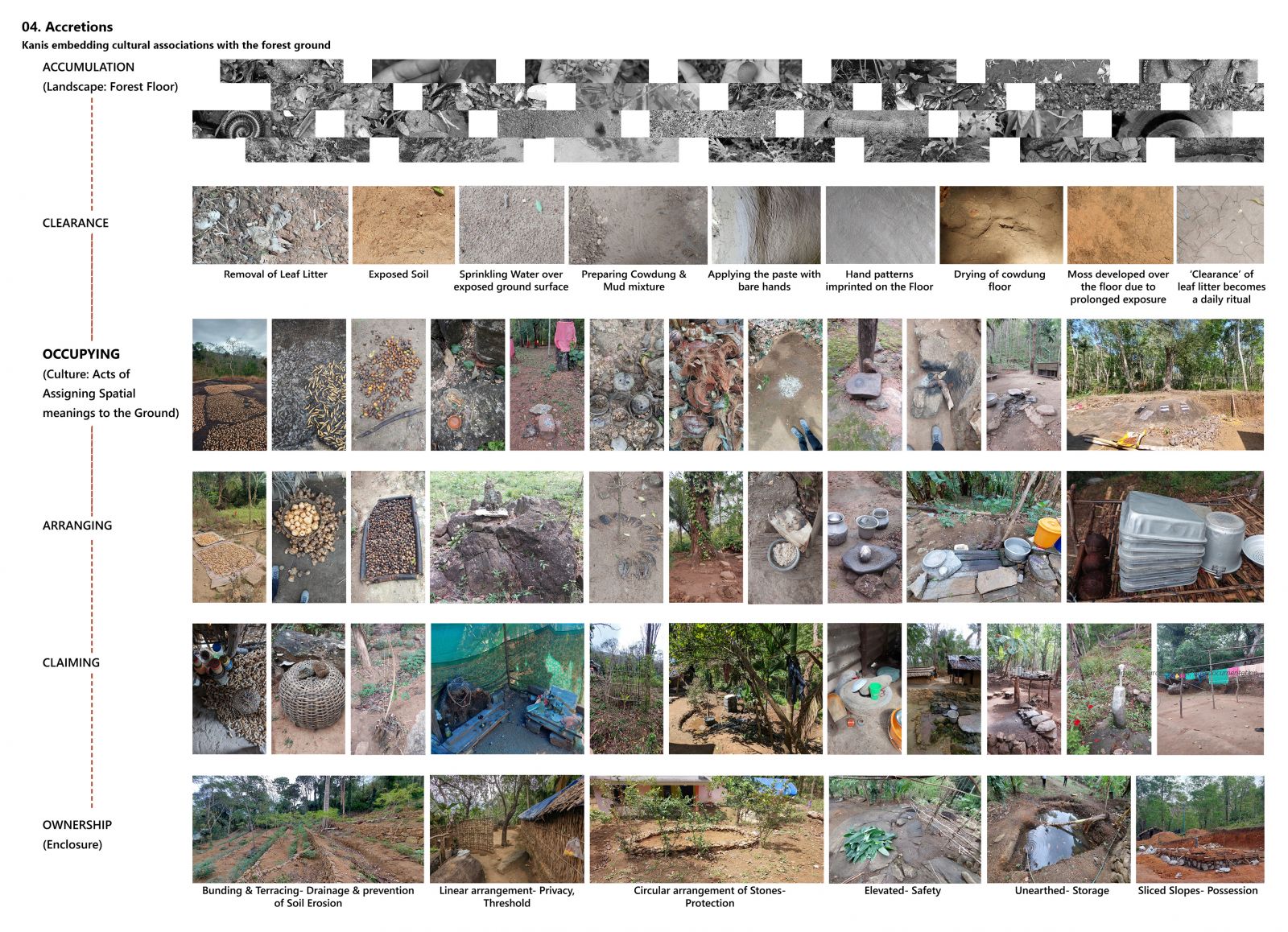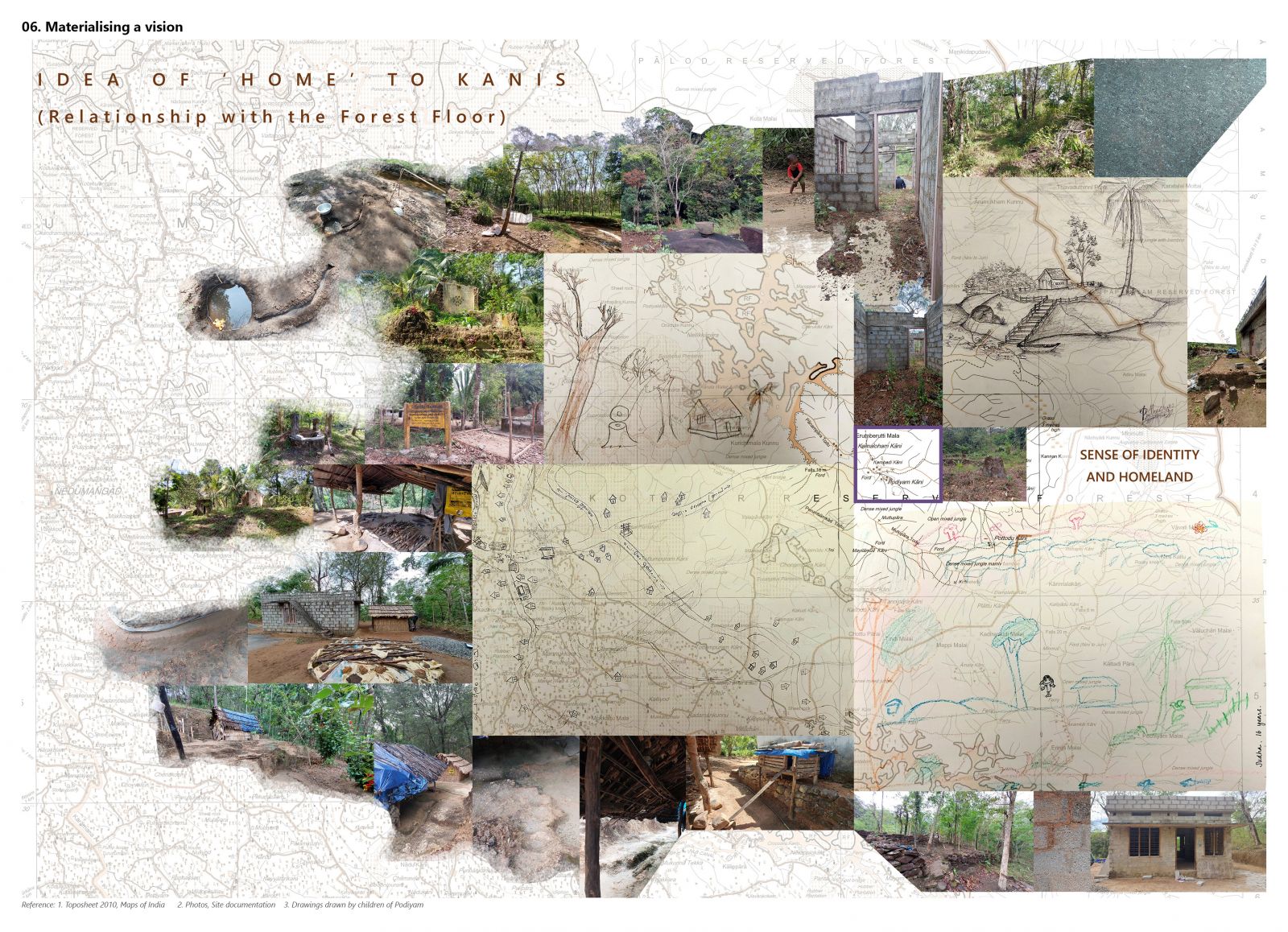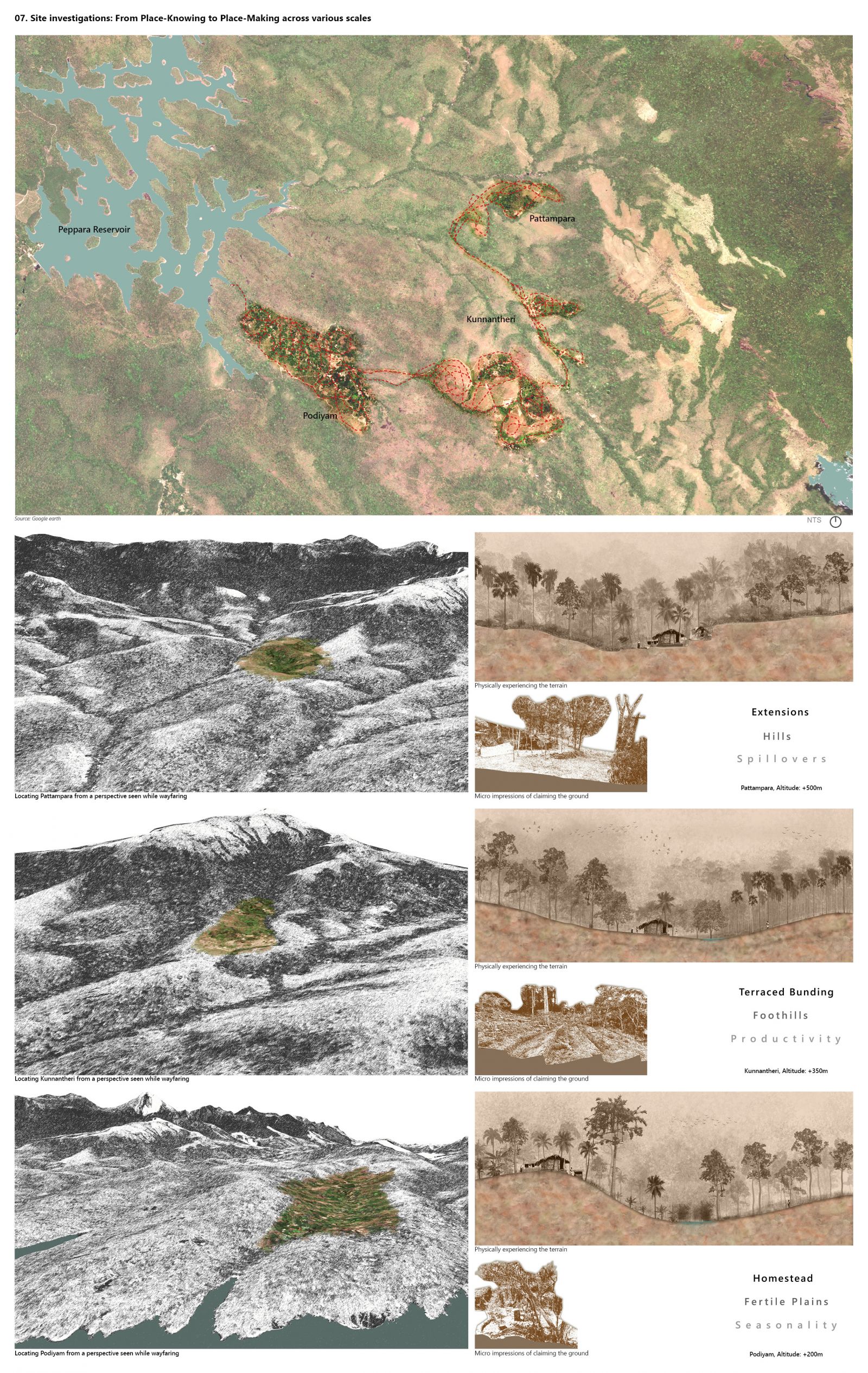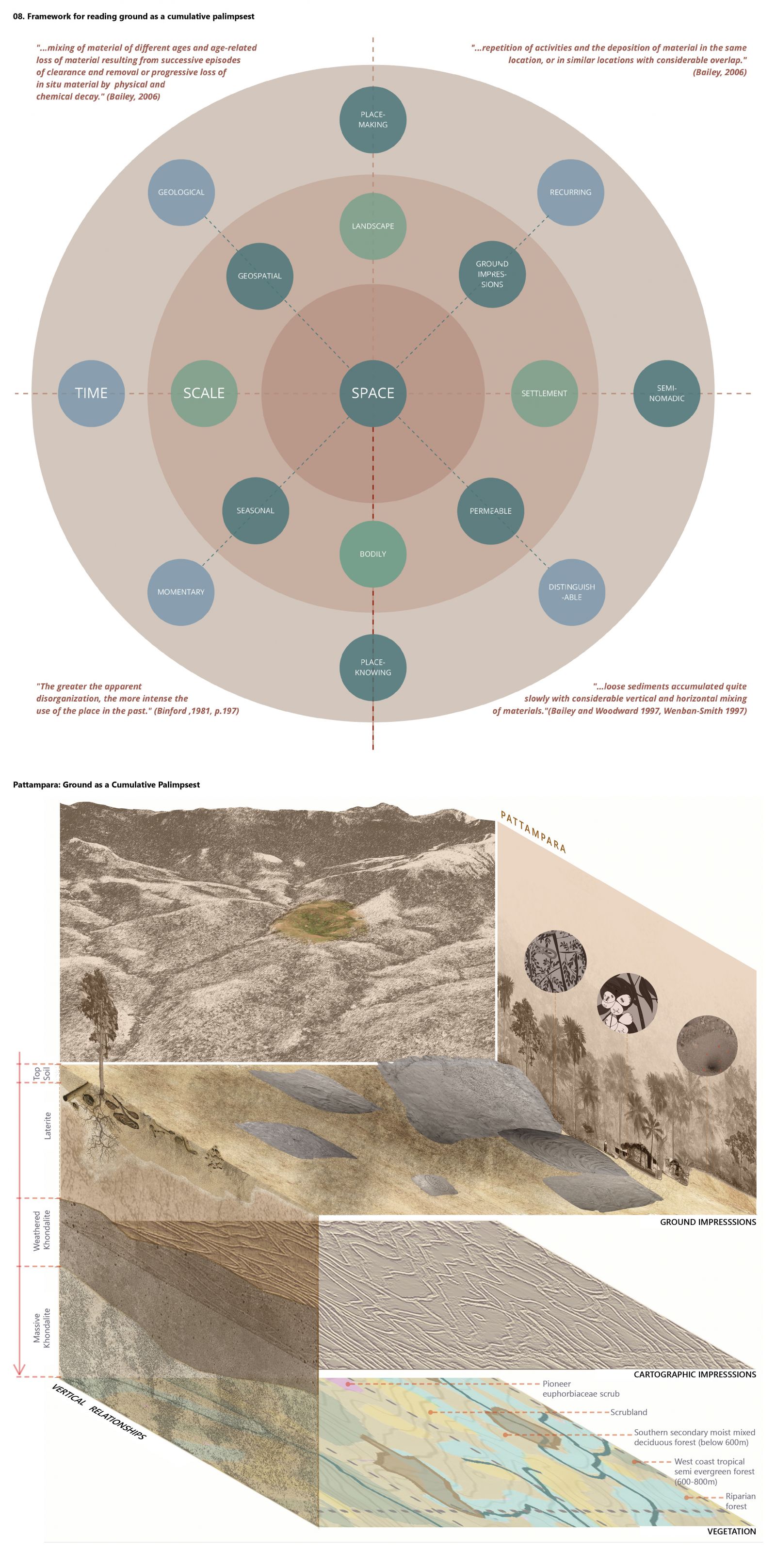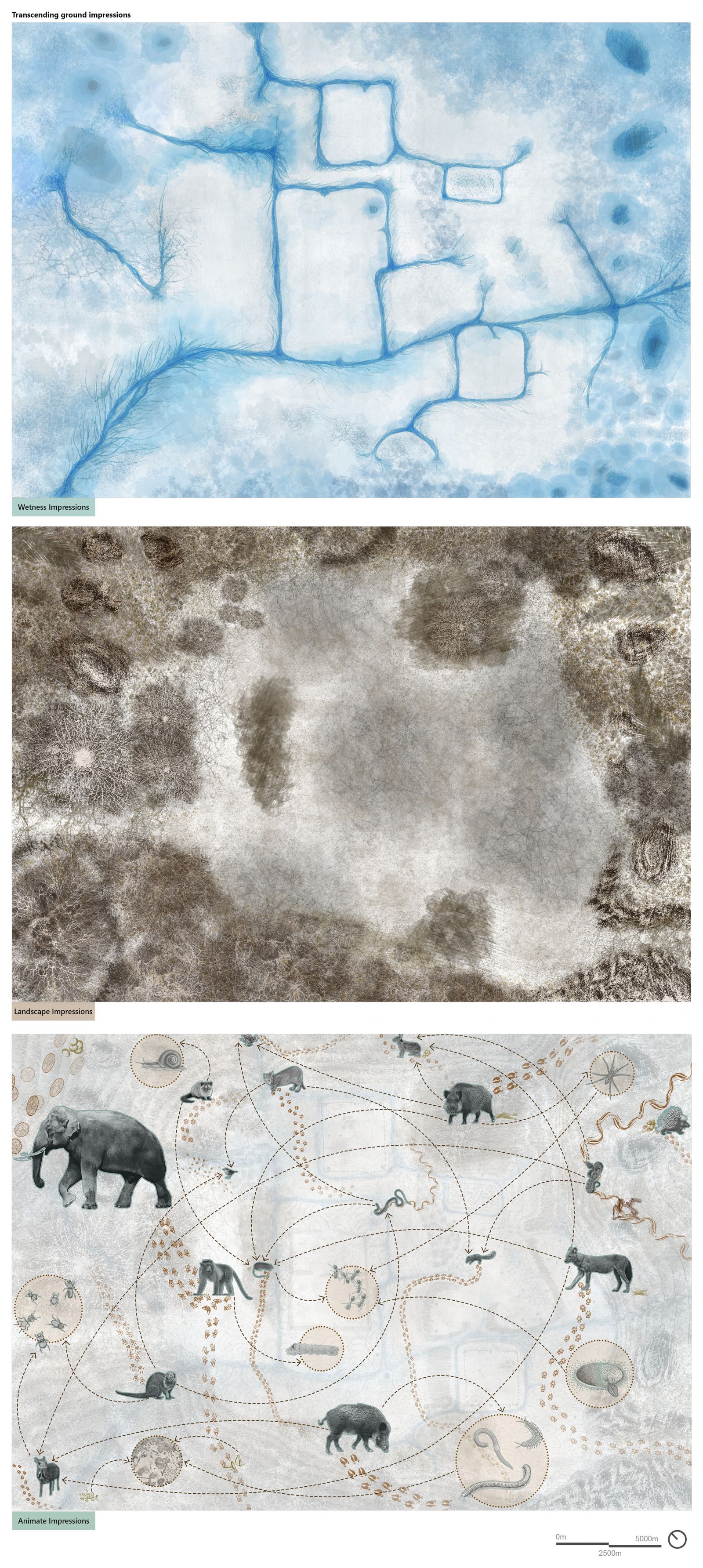- Student NAGOTANEKAR SHRADDHA SANJAY SHEETAL
- Code PLA22329
- Faculty Architecture
- Unit L4 Studio Unit
- Tutor/s Divya Shah
- TA Sankalpa Patel
The arduous terrain of Agasthyamalai embeds a strong bond between the Kanis and their forest ground. Their rituals of how they occupy, arrange and claim the forest ground add layers of a cultural entity; ‘...a meshwork of entangled lines of life, growth and movement’ (Ingold, 2011), where an exchange of impressions continues; of the earth, of the lived experiences, and of the cultural identities. These impressions of engaging with the ground become a critical tool in understanding the spatial constructs of the Kanis. The vision focuses on acknowledging, recording, and formalizing these impressions as a material register, occurring at different terrains, namely the plains of Podiyam, foothills of Kunnantheri, and hills of Pattampara. The project looks at the nature of these seemingly temporal impressions across scales and time. Further, the meanings of these impressions are decoded for reading grounds. A template of spatial methods for sensitively perceiving such permeable and ephemeral landscapes is prepared. The process explores Kani’s relationship of transforming ‘Place-Knowing’ into ‘Place-Making’ through the 6 stages of looking at units of landform, documentation, literature review, referring to cartographic drawing methods, intuitive and methodical interpretation, at an intimate scale that engages the animate with the inanimate. These methods become a visual reference for spatial practices to engage in reading landscapes. It involves decoding the process of recording, reading, and analyzing landscapes. The methods explored here are subject to seasonal shifts and may not be applicable in all cases.
